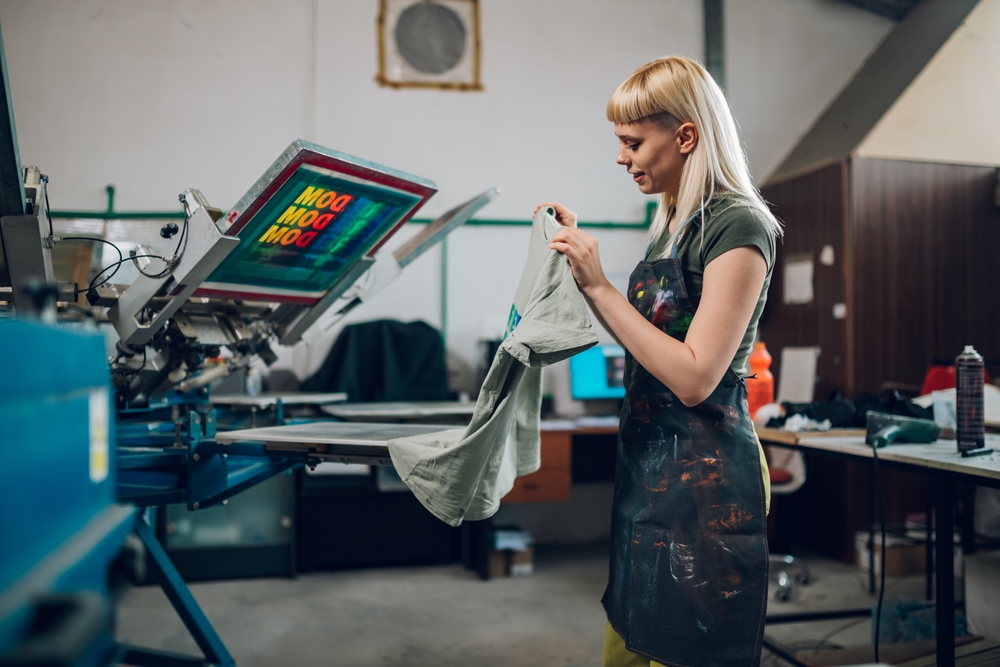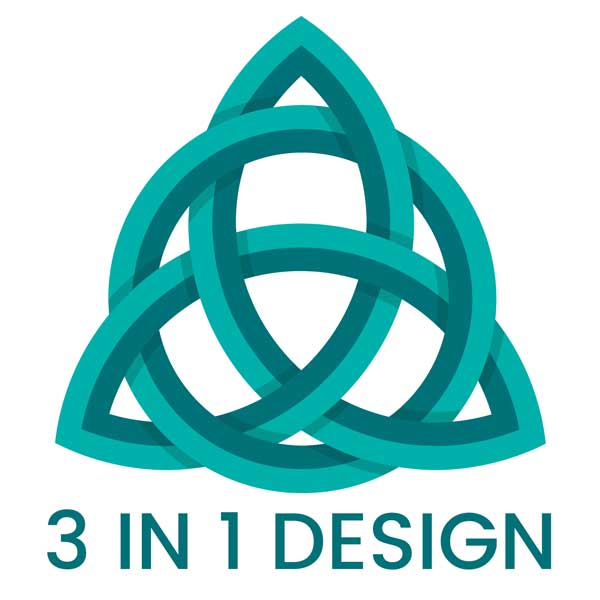
Creating unique, eye-catching merchandise is a goal for businesses, artists, and organizations looking to stand out in today’s competitive market. One of the most popular and effective methods for achieving custom designs on various items is through screen printing. This technique allows for vibrant, long-lasting prints that can be applied to a wide range of products, from T-shirts to tote bags and beyond. In this blog, we’ll dive into the world of screen printing, explore how it works, and discuss why it’s an excellent choice for custom merchandise.
What is Screen Printing?
Screen printing, also known as silk screening, is a printing technique that involves using a mesh stencil (or “screen”) to transfer ink onto a surface, except in areas made impermeable by a blocking stencil. This process allows for crisp, precise designs with vibrant colors. While it has a long history in the art world, screen printing has expanded into the commercial realm, making it one of the go-to methods for custom apparel and merchandise.
The process has evolved significantly over the years, combining traditional methods with modern technology to offer endless customization options. Custom screen printing is now widely available, giving businesses and individuals the ability to bring unique designs to life on a wide variety of items.
How Does Screen Printing Work?
The screen printing process begins with creating a stencil of the design. The stencil is typically placed on a mesh screen that’s stretched over a frame. Ink is then applied to the screen, which is pressed through the mesh in areas where the stencil allows, transferring the design onto the item underneath. Each color in a design requires a separate screen, so multi-colored designs can take more time to produce.
For example, if you’re screen printing a T-shirt with a two-color logo, you’ll need one screen for each color. The inks used in screen printing are generally thick, creating vibrant and durable prints that can withstand repeated washing without fading.
Benefits of Screen Printing for Custom Merchandise
Screen printing offers a number of advantages that make it ideal for creating custom merchandise. Here are some key benefits:
High-Quality Prints
Screen printing produces high-quality, vibrant images with excellent color saturation. Unlike other printing methods, screen printing inks are thicker and applied in multiple layers, resulting in long-lasting prints that retain their vibrancy over time. This quality is particularly advantageous for apparel that will be washed frequently, as the colors won’t fade easily.
Cost-Effective for Large Quantities
One of the biggest advantages of screen printing is its cost-effectiveness for bulk orders. While the setup process can be somewhat time-consuming, once the screens are made, printing large quantities becomes relatively quick and inexpensive. This makes screen printing an ideal choice for businesses, sports teams, or events that need a large number of custom items.
Versatile Application
Screen printing is incredibly versatile and can be applied to various materials, including cotton, polyester, wood, glass, and metal. This flexibility allows for custom merchandise options that go beyond T-shirts and apparel. Items like custom tote bags, hats, hoodies, posters, and even certain types of promotional products can all be screen printed, providing a wide range of possibilities for showcasing a brand or message.
Ideal for Bold Designs
Because of the thick application of ink in screen printing, this method is especially suited for bold, simple designs that require high contrast and solid colors. Logos, text, and simple illustrations often translate very well through screen printing, as the clarity and vibrancy of the design are retained.
Types of Screen Printing Techniques
Different types of screen printing techniques offer unique finishes and can help achieve specific aesthetic goals. Let’s look at some popular methods within custom screen printing:
Spot Color Printing
Spot color printing is the most commonly used screen printing technique. It involves applying solid, single colors directly to the material. This method is perfect for designs that don’t have gradients or shading and is commonly used for logos and text-based designs.
Halftone Printing
Halftone printing uses tiny dots of ink to create shading and gradients in an image, allowing for more detailed designs. By varying the size and spacing of the dots, halftone printing can create the illusion of multiple shades of a single color, or even photographic images.
Grayscale Printing
Grayscale printing is a technique that uses only black ink to create an image with various shades of gray. This method is commonly used to create black-and-white photographic images on fabrics and other materials, offering a vintage or classic look for custom merchandise.
Duotone Printing
Duotone printing involves using two contrasting colors to create a design. This can produce a visually striking effect and is often used in artistic and branding applications. Duotone printing is ideal for creating a custom look that has more depth than spot color while still maintaining simplicity.
CMYK Printing
For full-color designs, screen printers can use the CMYK color model, which involves layering cyan, magenta, yellow, and black inks to create a wide range of colors. This method is more complex but allows for highly detailed, vibrant images. CMYK screen printing is ideal for complex artwork and designs that require multiple colors and fine details.
Steps Involved in Custom Screen Printing
Creating a custom screen-printed product is a straightforward process, but it involves several critical steps to ensure high-quality results:
- Design Creation: The first step is to create the design or artwork. The design should be vector-based to ensure crisp lines and edges. Designs are often separated into layers if multiple colors are used.
- Screen Preparation: Once the design is finalized, a screen is created for each color in the design. The screen is coated with a photosensitive emulsion, then exposed to light, hardening the emulsion and creating a stencil of the design.
- Setting Up the Screen: The prepared screen is placed on a press, with the fabric or material positioned underneath. Ink is then applied to the screen and pushed through with a squeegee.
- Curing the Ink: After printing, the ink must be cured (usually through heat) to set it on the material permanently. This ensures the durability and longevity of the print.
- Quality Control: Each printed item is inspected for quality, ensuring that the final product meets expectations and is ready for distribution.
Choosing the Right Ink for Screen Printing
The type of ink used in screen printing can significantly impact the look and feel of the final product. Here are some common types of inks:
Plastisol Ink
Plastisol ink is one of the most popular inks used in screen printing. It sits on top of the fabric, creating a vibrant, slightly raised finish. Plastisol is durable and great for creating bold, long-lasting designs.
Water-Based Ink
Water-based inks penetrate the fabric, resulting in a softer finish. These inks are ideal for achieving a vintage or “worn-in” look, as they don’t have the raised texture of plastisol inks. Water-based inks are also environmentally friendly, making them a popular choice for eco-conscious brands.
Discharge Ink
Discharge ink removes the dye from the fabric and replaces it with the ink color, creating a soft and breathable print. This ink works best on darker fabrics and can create a striking, natural look on cotton garments.
Popular Products for Custom Screen Printing
Screen printing is a versatile method that works well on numerous products, making it a popular choice for custom merchandise. Here are some of the most commonly screen-printed items:
- T-Shirts: Perhaps the most popular item for custom screen printing, T-shirts are a staple for businesses, schools, sports teams, and events. They provide a perfect canvas for logos, slogans, and unique artwork.
- Hoodies and Sweatshirts: Heavier apparel like hoodies and sweatshirts are ideal for custom screen printing, especially during colder seasons when businesses want to promote their brand on durable, practical items.
- Tote Bags: Tote bags are popular in the eco-friendly market and among brands looking to promote sustainability. They are practical and provide ample space for creative designs, logos, and messages.
- Posters: Screen printing isn’t limited to apparel. Posters are another popular medium for this technique, allowing artists and brands to create custom artwork that can be framed and displayed.
The Future of Custom Screen Printing
As technology advances, custom screen printing is becoming even more accessible and innovative. New eco-friendly inks and sustainable printing processes are gaining popularity, catering to the increasing demand for environmentally conscious products. Digital printing technology is also enhancing screen printing by allowing for quicker setups and more intricate designs, making it easier for businesses of all sizes to offer custom merchandise.
Screen printing remains a trusted and versatile method for creating high-quality custom merchandise. Whether you’re looking to promote a business, express artistic creativity, or unify a team, custom screen printing provides an effective way to bring unique designs to life on an array of products.
By understanding the screen printing process, choosing the right inks, and exploring the wide variety of customizable items, you can create impactful merchandise that resonates with your audience and stands the test of time.
Need a Printing Shop in San Diego, CA?
We here at 3 in 1 Design are a family-owned-and-operated custom print shop in San Diego, California. We specialize in creating quality, screen-printed designs! Our in-house artist can create a special design based on your concept, or we can bring your own design to life if you’ve already got something made. We can print custom graphics on t-shirts, sweatshirts, school apparel, business cards, mugs, and much more. You tell us what you want, and we will make it happen! Call us today!

